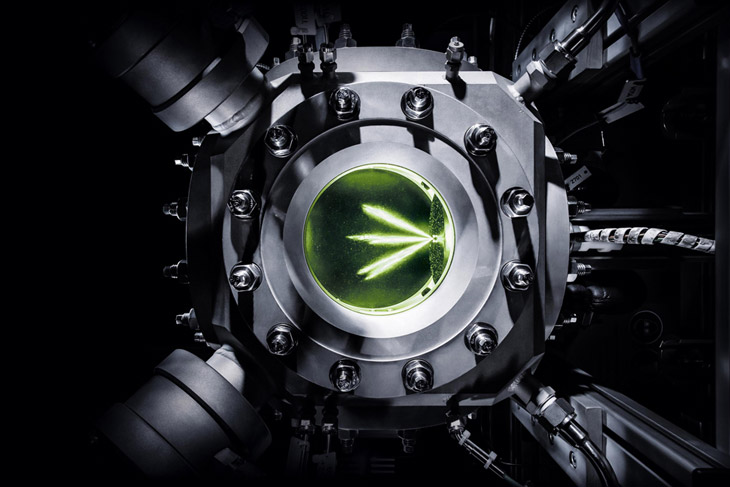The development of Audi e-fuels has reached a new level. The synthetic fuels have now completed a test cycle in Ingolstadt in the pressure chamber and the glass engine – with clear results: Audi e-fuels often even perform better than their conventional counterparts.
“Our test shows that as well as electric driving on renewable electricity, there are other concepts that permit long-distance, low-emission driving,” said Reiner Mangold, Head of Sustainable Product Development at Audi.
The engineers were first and foremost interested in mixture preparation and the synthethic fuels’ combustion characteristics. To investigate these, they simulated the conditions inside an engine in a pressure chamber at up to 15 bar and temperatures of 350 degrees Celsius. A special camera recorded how the fuel behaves during the injection process, because only a clean mixture preparation process will assure optimal combustion.
The glass engine was another test station. This test setup reveals the processes that are otherwise hidden by the metal walls of the cylinders. A small window made of quartz glass enables the experts to observe the fuel’s behavior in the cylinder and how it interacts with the airflow in the combustion chamber. During each of up to 3,000RPM in the research engine, a minute amount of fuel shoots into the glass cylinder, is compressed and ignited, and the exhaust gas then expelled.
Unlike fossil fuels, the composition of which varies depending on their place of origin, synthetic Audi e-fuels are absolutely pure fuels. Thanks to their chemical properties, fewer emissions are generated when they are burned. They do not contain any olefines or aromatic hydrocarbons. As a result, the synthetic fuels assure a more effective mixture preparation process, cleaner combustion and lower emissions.
The next task already awaits Audi’s engineers: They now aim to further optimize the production process for e-ethanol and e-diesel. These new fuels will then be ready for the market. Audi operates a research facility in Hobbs (New Mexico, United States) for the production of e-ethanol and e-diesel in partnership with Joule. At this facility, microorganisms use water (brackish, salt or wastewater), sunlight and carbon dioxide to produce high-purity fuels. The e-gas project in Werlte is another component of Audi’s extensive e-fuels strategy. It demonstrates how large amounts of green power can be stored efficiently and independently of location by transforming it into methane gas and storing it in the natural gas network.
